Altadena is an anthill of trucks moving in long lines, marching up and down the hill, carting off tons of toxic topsoil in every load. The disaster sites of people’s lives are being scraped into tidy brown rectangles by the Army Corps. of Engineers. They have given us our 72-hour notice. Get what you want because soon, all evidence of the lives we lived here will be gone.
My quarter of an acre looks batshit crazy. All the refuse is there, but people have added to our ruins by throwing bags of old clothes onto our median. The sight in the rainy gray of this Wednesday morning would be hopelessly depressing, if it weren’t for the wildflowers, which have gone completely bonkers and make it look almost scenic.
I stand in the drizzle, staring at it all in wonder. The pathos of our destroyed fence is countered by the madcap merriment of California poppies. The broken foot of our dining room bay window is adorned by two fat and sassy clumps of Hot Lips salvia. Lupines and monkeyflower are scattered like confetti across the debris field. This is a “Fuck Your Fire!” party being hosted by California native plants, and me.
When I first saw the house in the summer of 2019, I was underwhelmed by it. It was an unassuming Traditional two-beldroom built in 1937 and painted the color of an Ace Bandage. It sat on the lot like a maxi pad. Every outdoor surface of the 1/4 acre lot was covered in either concrete or crabgrass and the whole thing was wrapped in chain link fencing and an ancient, balding pittosporum hedge.
As soon as we got the keys to the house, I got down on my hands and knees in the front yard and started digging. I needed to see what was underneath that lawn. Would it be hardpan? Silt? Sand? Dear God, please don’t let it be clay. It felt exactly like peeling up a corner of wall-to-wall carpet and praying for parquet floors beneath.
I chunked out a clump of turf and beheld some of the darkest, richest loam I have eveer seen in thirty years of gardening in Southern California. I sat back on my heels and cast my eyes upwards toward the mighty San Gabriel mountains before me. I thanked them for blessing me with this alluvial soil. I vowed to turn this patch of land into a a paradise for the local fauna.
Over the next six years, aided by the Pandemic and proximity to the Theodore Payne Foundation, we ripped out the grass in front and back, cut down bottle brush trees, sheet mulched and cooked compost and planted innumerable pots of buckwheat, coyote bush, yarrow and milkweed along with five coastal live oaks, two white alders, a Western Redbud and a pomegranate. I flung wildflower seeds around every fall like I was Julia Child seasoning a chicken.
The garden took off, the birds gathered and the beneficials buzzed. In 2023 my garden was registered as a National Wildlife habitat.
But alas, the San Gabriels giveth, and the San Gaberiels taketh away.
I pick my way across the scorched, trashed yard, trying not to step on flowers or toxic debris. I find an Apricot mallow I planted last fall. It arches skyward, extending a delicate but defiant middle finger toward the mountains that tried to kill us a mere four months ago. I have never felt more proud of my garden than I do on this day. It is throwing a wild “Fuck your fire” party and I am the hostess.
I pop the trunk and get out my supplies: a stack of 5-gallon nursery pots, a shovel, potting soil, perlite and PPE. I kicked off my Berks and laced up my steel-toed boots, strapped on my respirator and pulled on my chemical-resistant gloves.
If I want to have anything to show for it, all my time, labor and money, I needed to dig up a few things, repot them and bring them back to my Eagle Rock rental, where they face an uncertain future in a small, silty yard overrun with creeping fig.
I start with the salvia. I dig in, feeling the gorgeous, chocolatey earth yield under the tip of my shovel. The weather is on my side—toggling between fine mist and light rain, reducing the risk of volatility and aerosolized dust.
I free the salvia, gently shake the dirt off its roots and plunk it into a five-gallon nursery pot. I am scared of my dirt now. The LA Times ran a piece on Sunday reporting “alarming levels of soil toxins in Altadena.” FEMA has reversed its longstanding policy of soil-testing disaster sites they clear, insisting that six inches is enough to ensure the soil’s safety. The LA Times did independent soil testing on forty Altadena homes and found that two out of every ten were unsafe.
The chemicals found in their samples are a rogues’ gallery of environmental bad actors, from Arsenic to Zinc. It’s hard to compute and I watch the rich dirt crumble. Am I risking my life to save some plants? Everything is toxic now. My brain is so full of microplastics, what harm can a little arsenic do?
Next, I tackle the vitis californicas “Roger’s Red,” a native grape I planted at the foot of a redwood arbor that came with the house. The vines had sat quietly the first two years, just digging itself in. Then, last year it scrambled arbor and burst into a firey red. It was spectacular.
Altadena was founded by ranchers who discovered the altitude and abundance of water flowing down the arroyo was ideal for growing grapes. Pasadena had strict temperance laws, so Altadena became the place to go for a good time. It’s still a good time, fully of jolly, mellow, heterodox souls who like a little distance from the city.
I dug for hours, getting soaked and muddy, grateful to have this time alone to talk to my plants freely, to tell them my plans for rebuilding and for one day bringing them back here to root once again in Altadena soil. I silently pray that the soil isn’t too poisoned. Filled with plants, my Prius is an ark carrying me and my flora forward into an uncertain future.
We will get our soil tested one way or another. If we find our dirt is fucked, then we will probably have to move on to greener, less toxic pastures.
But for now, I am trying to stay as hopeful as this little apricot mallow, bravely riding shotgun west into Eagle Rock, looking for a place to root until the day she can come back home to the sweet soil of Altadena.




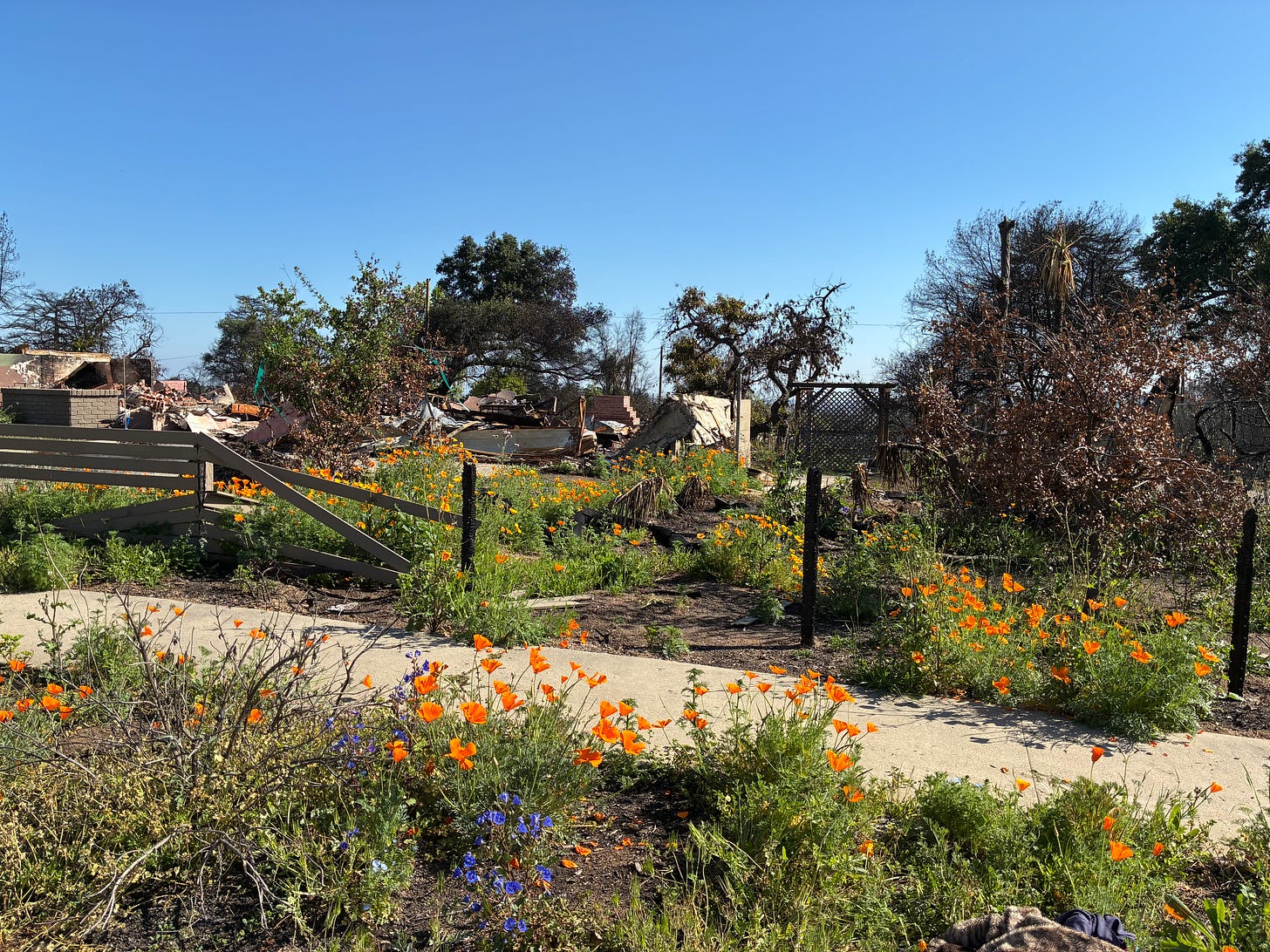
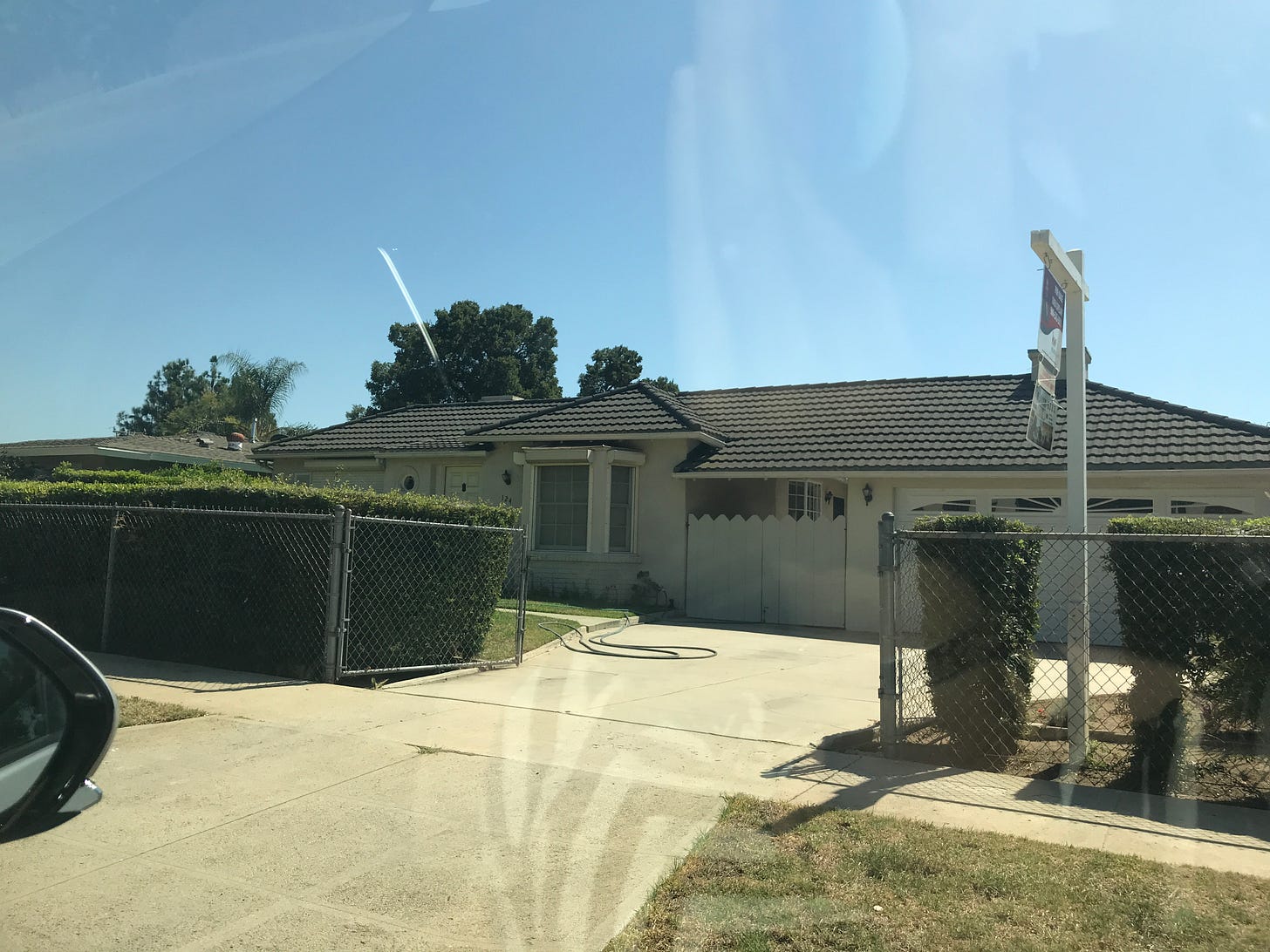
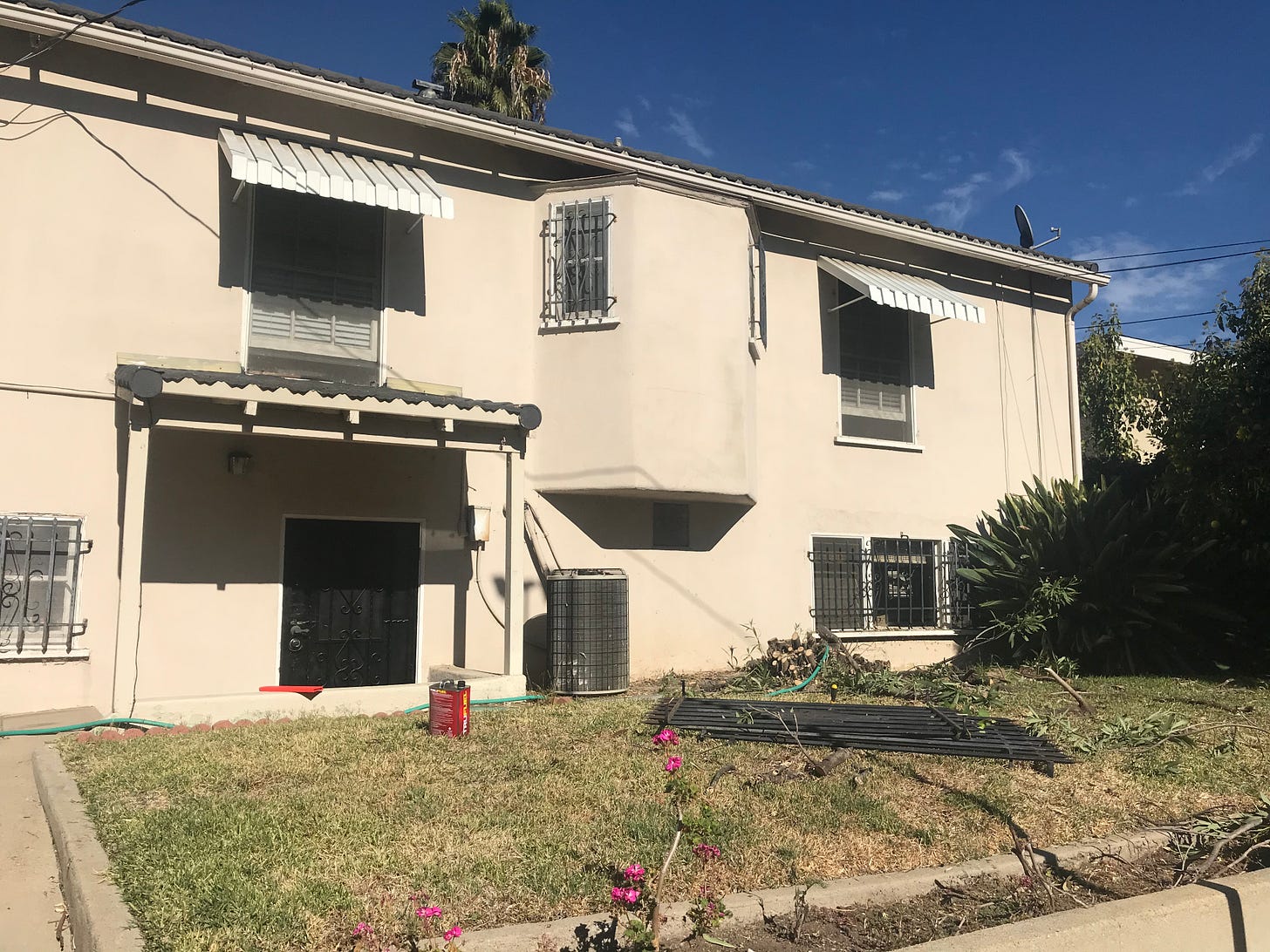

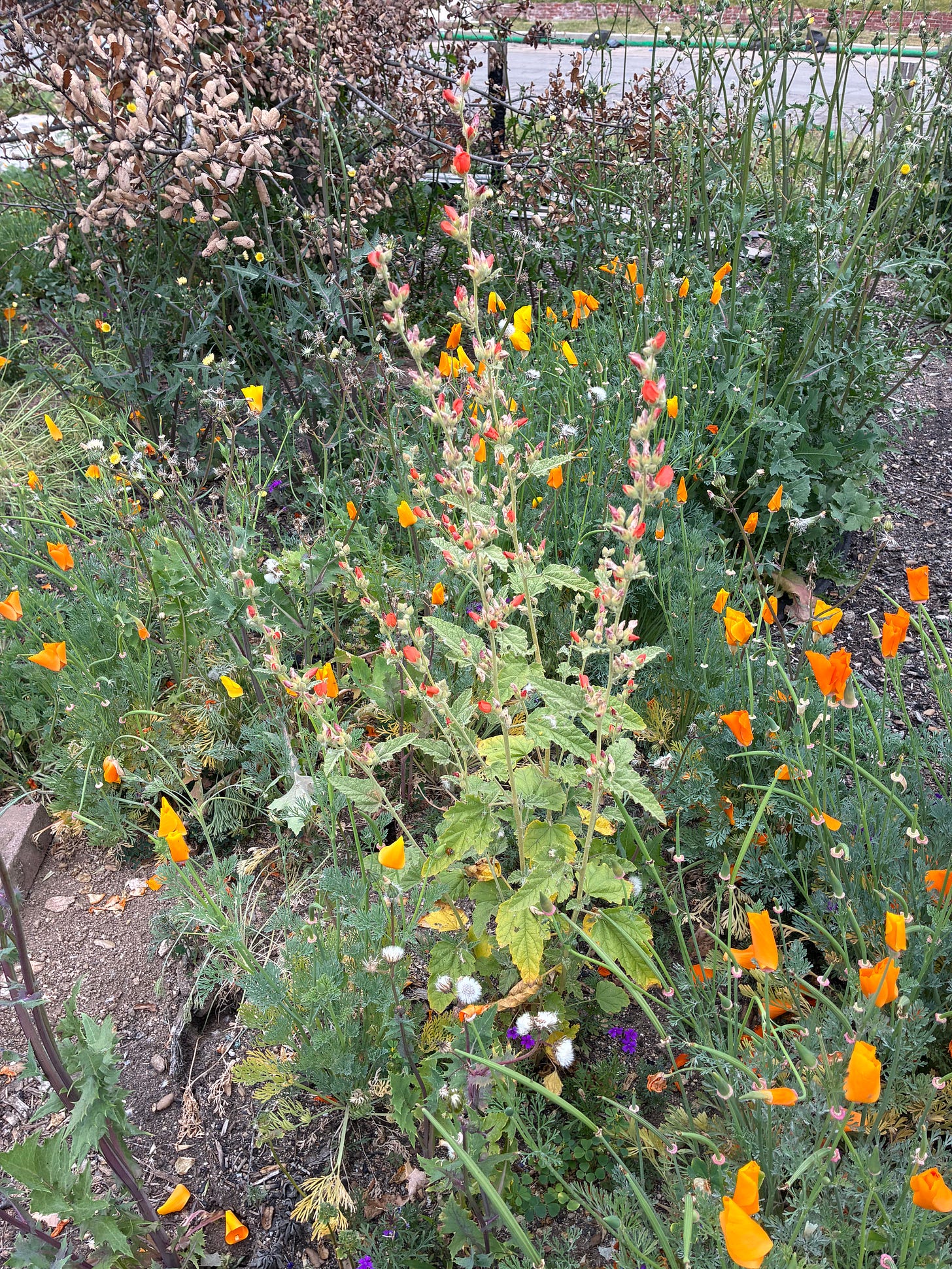
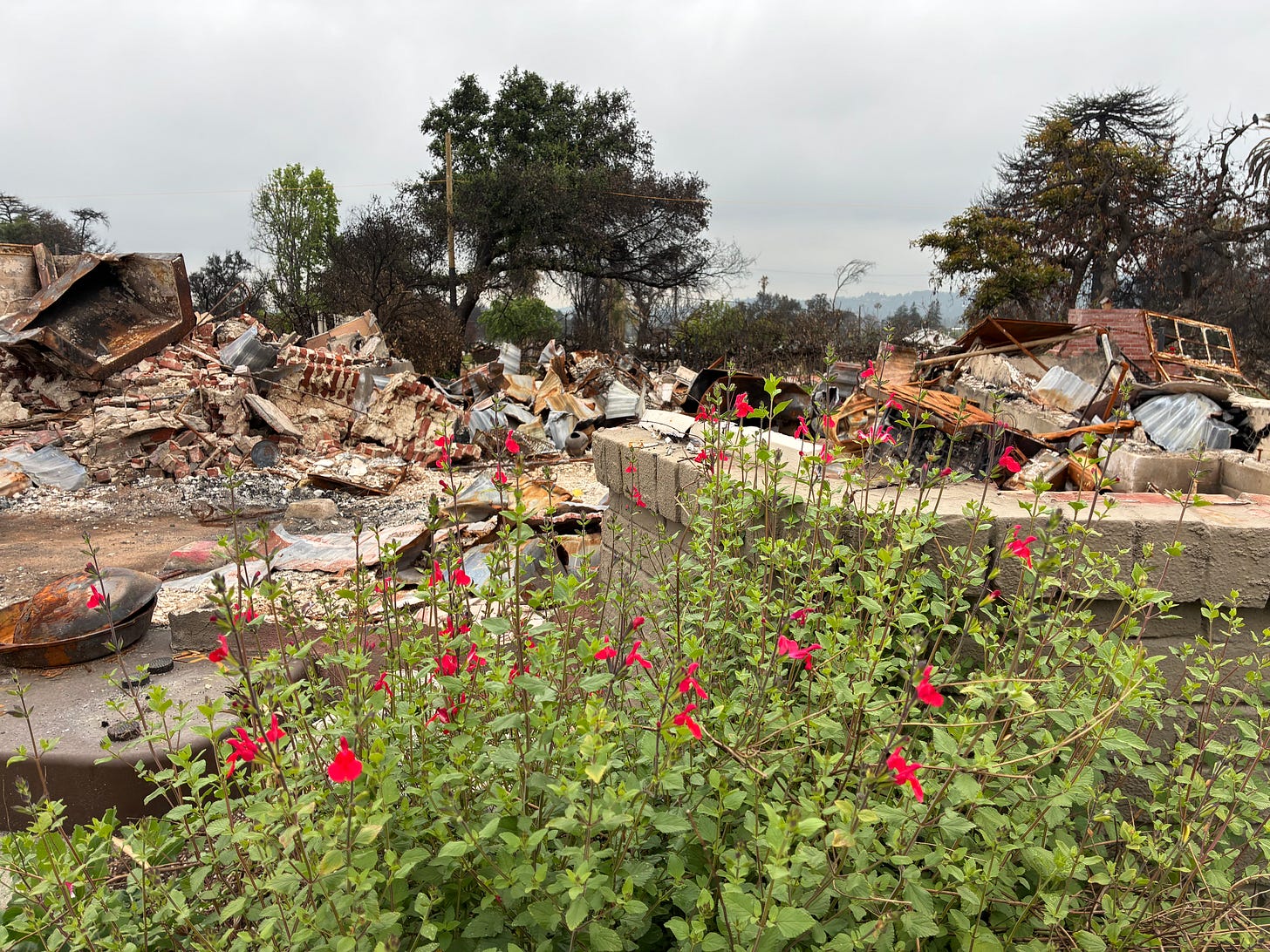
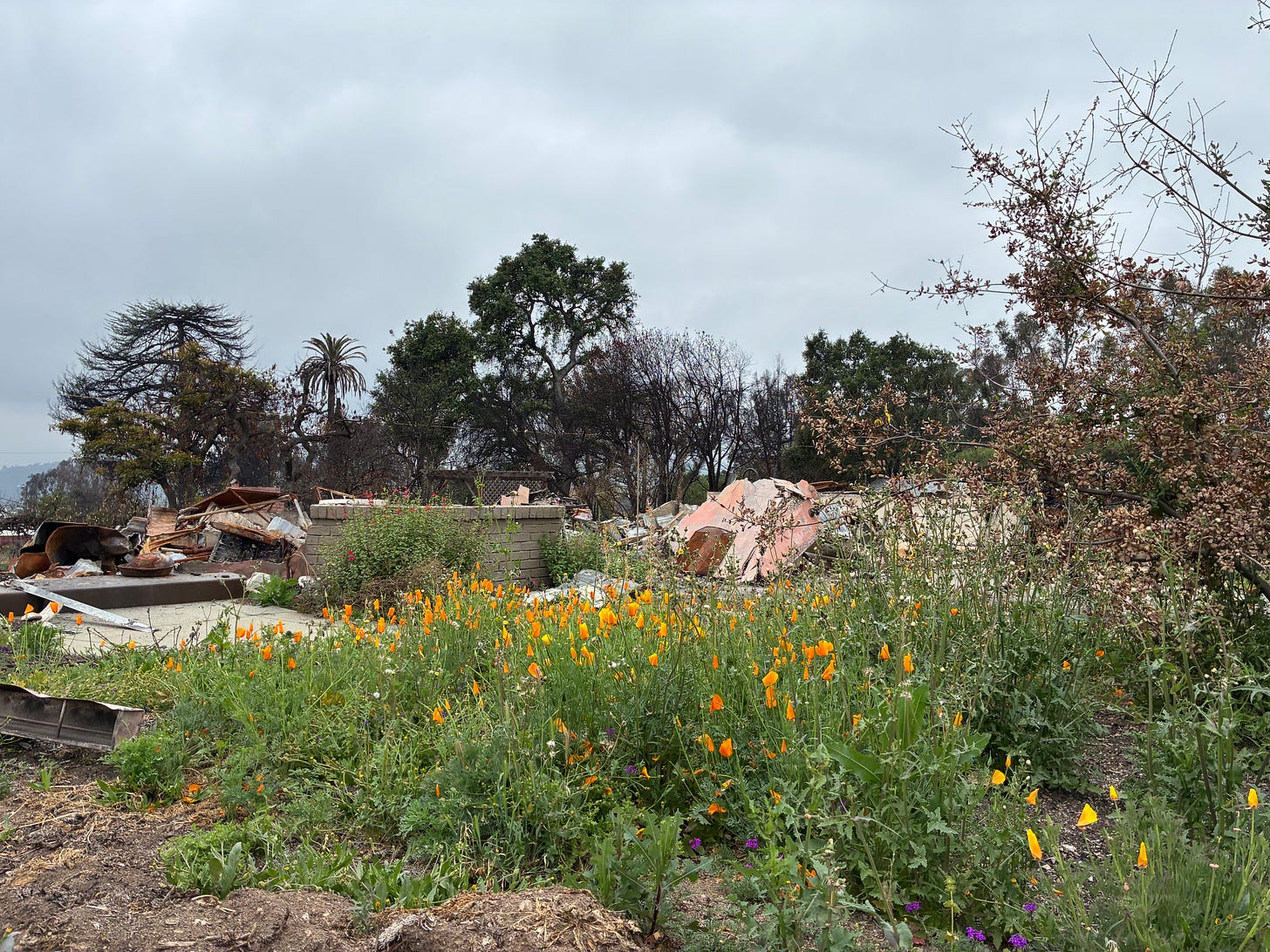
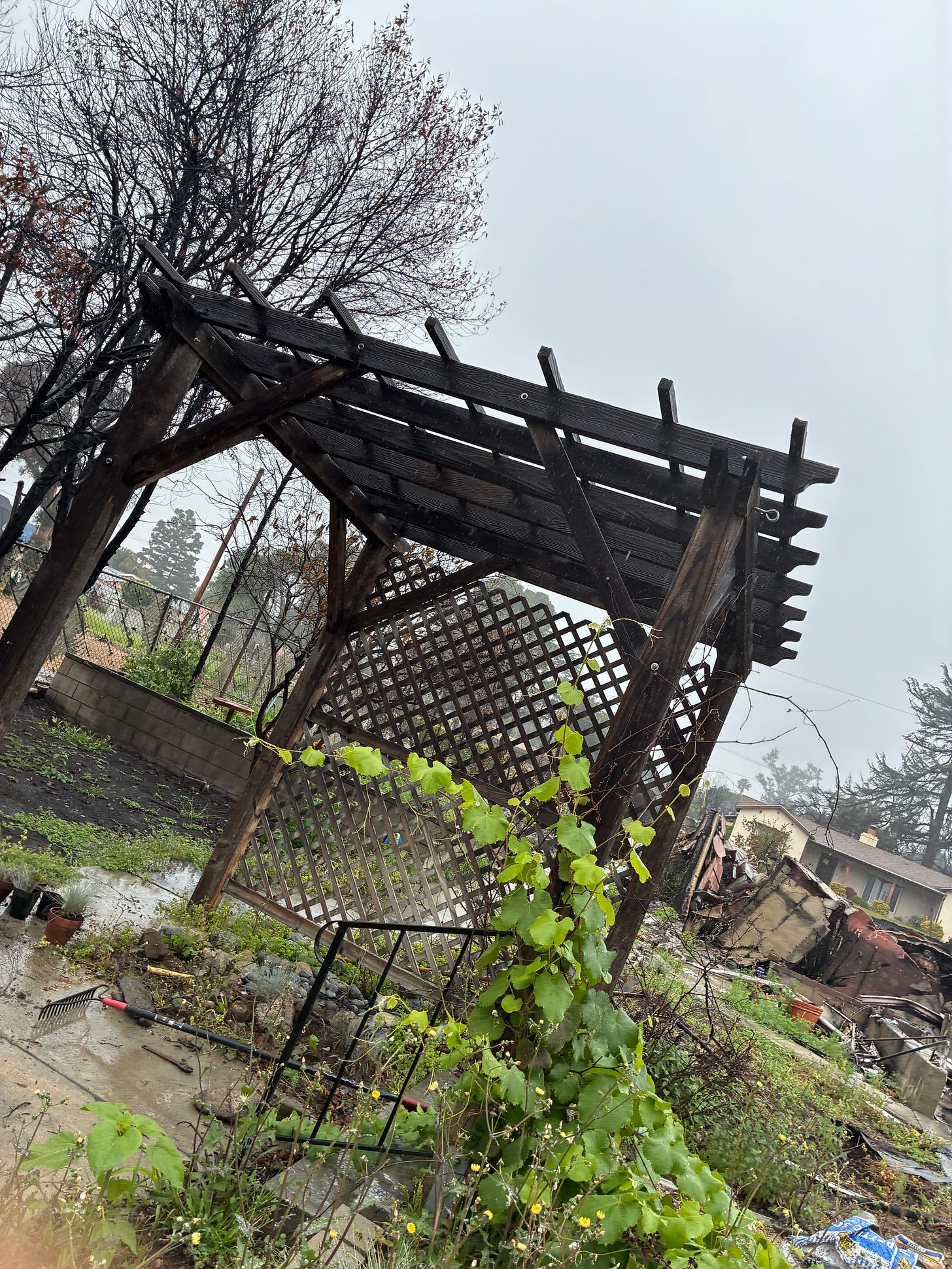
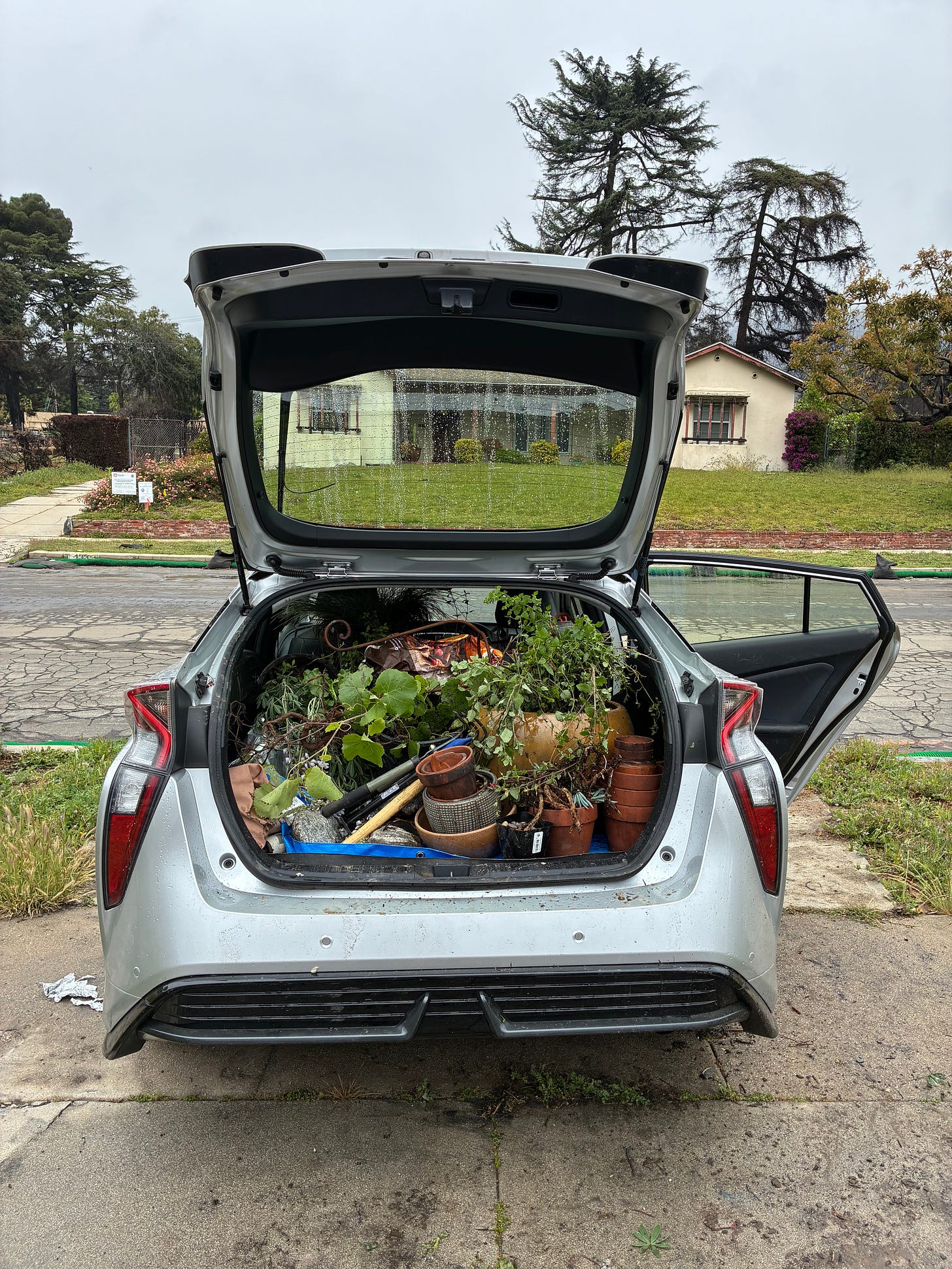
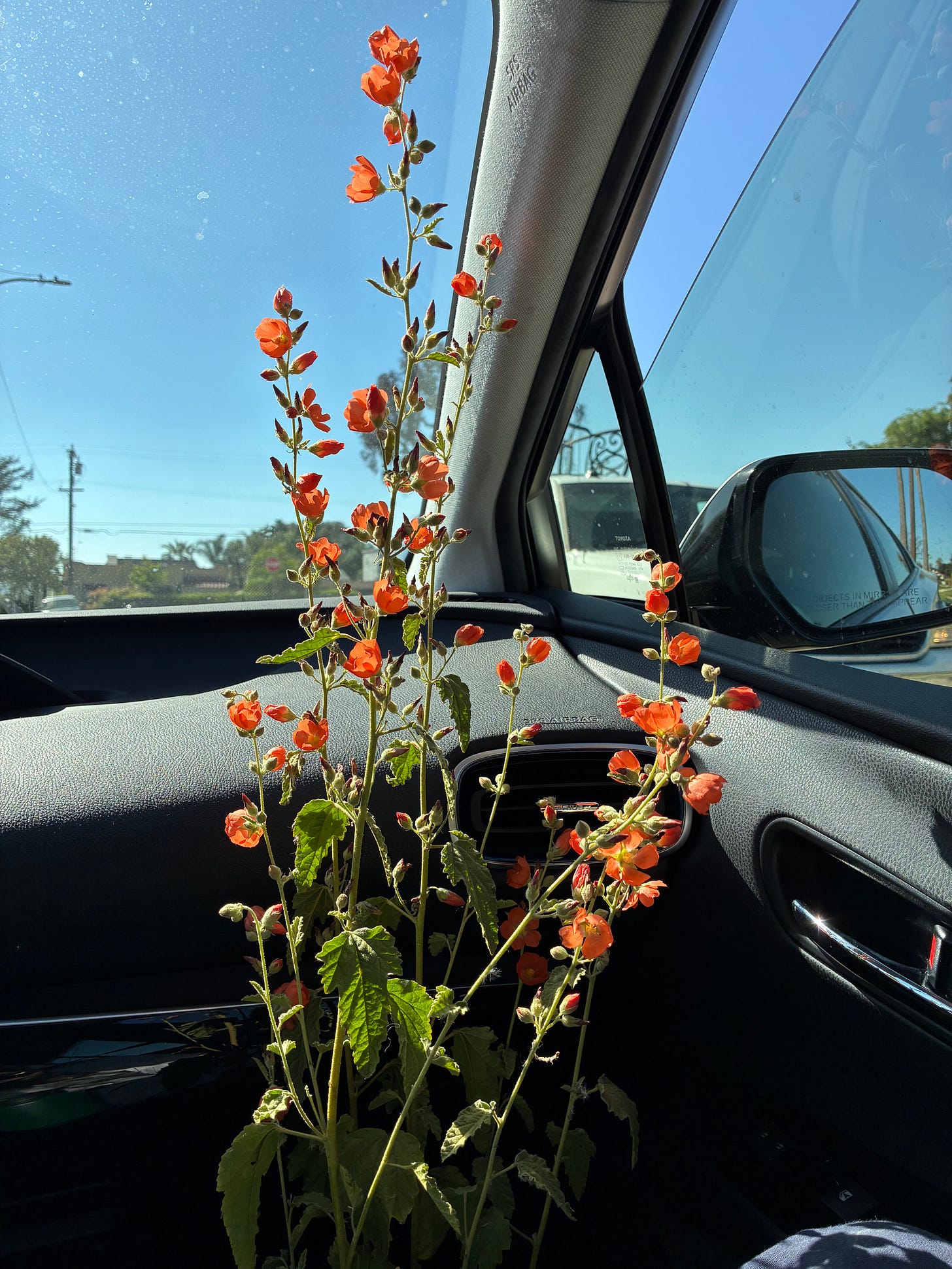
Oh Erika - I’m so sorry I never saw your garden in its heyday. But I will definitely see its reincarnation which I’m sure will take off w a survivor’s zeal. in the meantime, good luck facing down those toxins!
I so get your loving and saving your precious plants. Thank you for sharing. Bet you will put these missives together and create a book at some point. All the best to you and that boyfriend of yours❤️